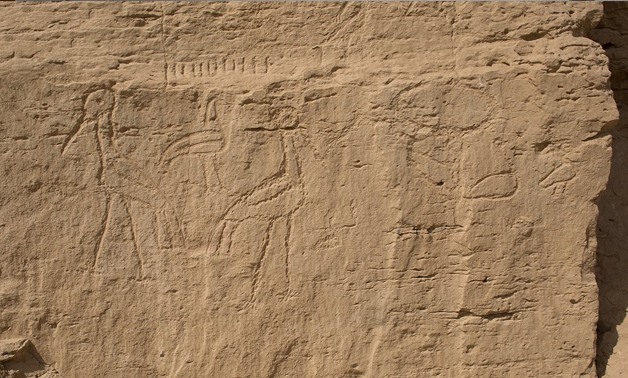
Rock inscriptions found in Al Khawi Village. Photo courtesy to the Egyptian Ministry of Antiquities
CAIRO - 22 June 2016: Yale University’s archaeological mission project, Elkab Desert Survey, has discovered rock inscriptions in Al-Khawi Village located seven kilometers north of the ancient city of Elkab and 60 kilometers south of Luxor, Ministry of Antiquities announced Thursday.
A four-signed panel with a bull’s head on a short pole was found. The script was written from right to left which is the dominant writing alignment in later Egyptian scripts. This panel is one of the most major discoveries from the Naqada III/Dynasty 0 (ca. 3250-3100 BCE) yet.
Dr. John Coleman Darnell, head of the archaeological mission, said,” These inscriptions are discovered on high rock faces overlooking the modern railroad.” “The earliest one shows animal images—especially a herd of large elephants—some of which develop into symbols of political power for late Pre-dynastic rulers.”
Dr Mahmoud Afifi, head of the Ancient Egyptian Antique Sector at the Ministry of Antiquities, stated that the rocks inscriptions preserve the largest and earliest documentation of the development and formation of Ancient Egyptian writing system.
Hani Abu el-Azem, head of Central Department of Upper Egypt Antiquities, added that the discovery will allow them to understand the development of the graphic communication system. These inscriptions are premature forms of hieroglyphics in Upper Egypt in dating back to 3250 B.C.E.
The symbols used in the script are not phonetic but provide an intellectual background for representing nature to further understanding the hieroglyphics. Unlike this script, hieroglyphics are phonetic and an actual representation of the sounds of the Ancient Egyptian language.
This script also provides information on the transition between the Pre-dynastic Period and Dynasty 0.
Comments
Leave a Comment